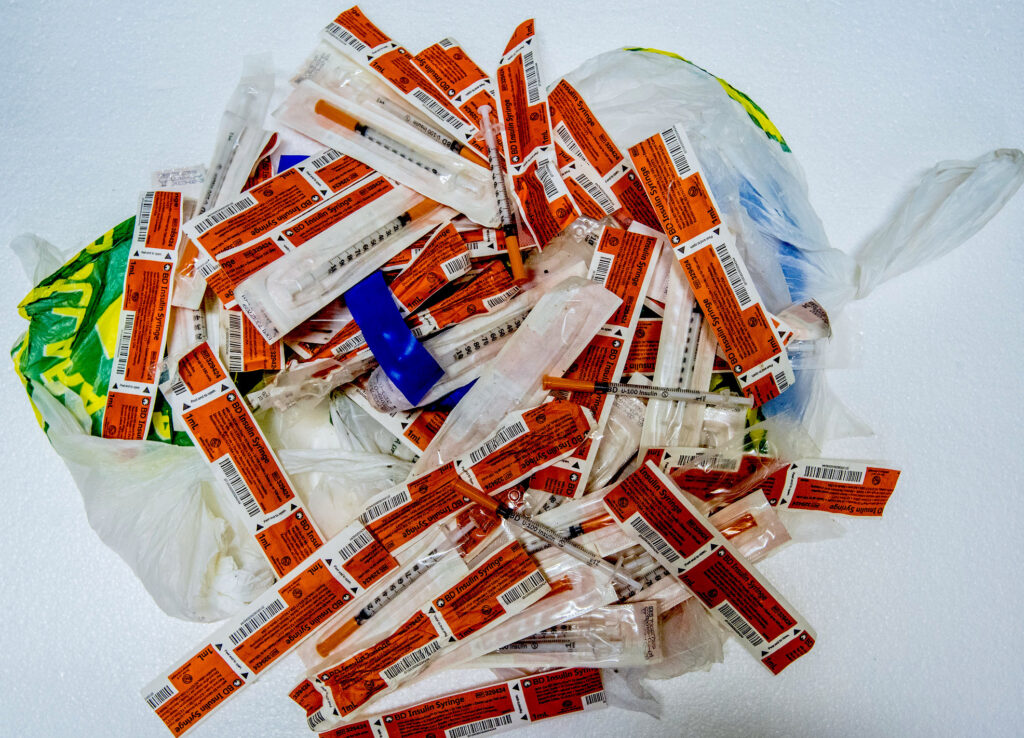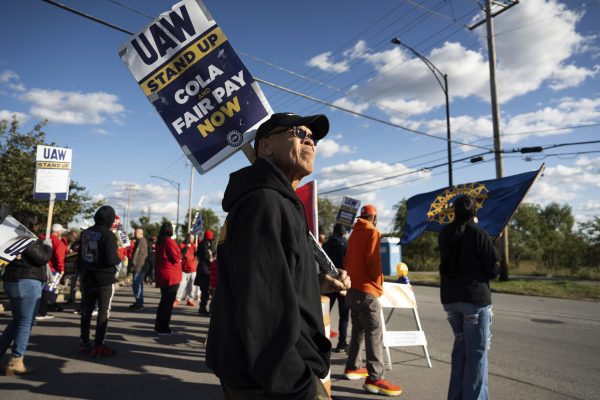In 2017, for the second time in recent years, U.S. life expectancy decreased. Headlines blamed the decline on suicides and opioids, and cast impoverished rural whites as the primary victims. A great deal of attention has been focused on Appalachia, whose population is (erroneously) portrayed as uniformly white, poor, and ravaged by drug addiction. White sickness has thus come to stand for what is supposedly wrong with health, health care, and culture in the United States.
White sickness has come to stand for what is supposedly wrong with health, health care, and culture in the United States.
The truth is not so simple. Black mortality rates continue to dwarf those of whites—another tragic indication of how our society has normalized racial inequality. In West Virginia, the state with the highest overdose death rate, the rate of overdose among blacks is slightly higher than among whites. In Tennessee, whites fare worse than blacks, but maybe not for long: from 2008 to 2016, the overdose mortality rate more than quadrupled among blacks compared to about a doubling among whites. Moreover, mortality rates increased for seven of the ten leading causes of death, with the highest percentage increase seen in influenza and pneumonia. Drug addiction, then, is not the easy explanation we have made it out to be. Income inequality, loss of social safety net services, and state violence against communities of color are also massive problems, a conclusion borne out by a large body of research. But by only focusing on class—those poor white Appalachians—most media reports ignore the racism, xenophobia, and LGBTQ discrimination found in every aspect of the U.S. health care system, from medical research to bedside care.
There is hope in this story, however. Because these marginalized communities have been hung out to dry for so long, they have developed the tools that are now proving most successful in combatting the opioid overdose crisis. “Harm reduction,” as this approach is called, is a social justice movement that supports the dignity and rights of people who use drugs. Many harm reduction programs have roots in 1980s activism around HIV, and most of the organizations I have worked with exist thanks to the unrelenting labor of queer activists. Some view the approach as controversial because it bucks the dominant neoliberal attitude toward drug use, exemplified by the War on Drugs’s focus on punishment. Instead of trying to enforce abstinence—viewing individuals as the site of punitive state intervention—these initiatives try to reduce the harms, both medical and social, associated with drug use.
With social services and medical support increasingly out of reach for many Americans, harm reduction takes seriously the intersecting inequalities that push people into the fringes and drive down life expectancy. If efforts to combat overdose deaths are to be successful and equitable, we must acknowledge how these inequalities affect people who use drugs—within and outside of Appalachia.
Drug use was a part of my life long before it was a research interest. I learned about Oxy, meth, and all the rest from hanging out in people’s houses and cars. Many of these people have tried abstinence-only programs repeatedly. Every unsuccessful round brings not only another layer of shame but also an increased chance of overdosing, since any period of abstinence diminishes one’s tolerance. When I finally began researching opioid and meth use as an anthropologist, I came at the issue with a simple desire: to help the people around me live.
Many harm reduction programs have roots in 1980s activism around HIV, and exist thanks to the unrelenting labor of queer activists.
Three main service provisions fall under the harm reduction umbrella. First, ensuring access to medication-assisted treatment (MAT) such as methadone or buprenorphine (commonly called bupe). These drugs are opioids, thus fulfilling the body’s biochemical addiction, but they are carefully regulated and using them is associated with better outcomes than abstinence programs. Not everyone does well with MAT, but those who do thrive. As one woman told me, bupe “keeps me a functioning human being. I’ll stay on it the rest of my life if I have to.”
The second service provision is easy access to the drug naloxone, which counteracts an opioid overdose. In 2017 there were over 70,000 overdose deaths in the United States, the vast majority of which involved opioids. Although documented naloxone saves are likely underreported due to a variety of issues—including a lack of a centralized reporting system and an unwillingness of some people to acknowledge saves— we know at least 26,000 lives were saved by administering naloxone between 1996 and 2014.
The third pillar of harm reduction is “safer consumption.” This includes syringe services programs (SSPs), where used needles can be exchanged for sterile ones—thus decreasing the odds of contracting HIV, hepatitis C, and other infections—as well as the more controversial safer consumption spaces (SCSs), often called supervised injection sites. Many people without access to SSPs develop abscesses because they reuse needles and are wary of being stigmatized by health care providers if they seek help. With SSPs, they are not only able to obtain clean equipment but also have a contact point to ask about wound care, to assess when clinical care is necessary, and to connect to nonjudgmental services.
All three of these strategies are associated with better outcomes than abstinence-only programs. Yet they have been slow to catch on due to a combination of cultural preconceptions and access challenges, especially in rural areas with high poverty rates. Moreover, the relationship between harm reduction and the state is tricky. While government service provision and funding can obviously help, they also heighten surveillance, which can further marginalize people. Participants in state-funded substance use treatment programs sometimes describe them as “setting people up to fail” because the programs are incredibly strict and often do not have the resources to provide quality care or to ameliorate underlying socioeconomic inequalities.
At least 26,000 lives were saved by administering naloxone between 1996 and 2014.
For all these reasons, many harm reduction strategies are still heavily regulated, if not outright illegal. For those of us working on the ground, the threat of incarceration or program closure looms over our attempts to save lives.
• • •
In rural Kentucky and Tennessee, the most widespread harm reduction strategy utilized thus far has been naloxone distribution. Prescribers, local nonprofits, and municipalities dispense doses to first responders as well as lay people. It is not an over-the-counter medication, but all states have taken measures to dispense naloxone without a patient-specific prescription, meaning it is at the pharmacist’s discretion. And it is still very much a choice to distribute. Many counties do not have a single entity that is willing to distribute naloxone. When asked if she distributed naloxone, the lone pharmacist in one East Tennessee county replied, “We don’t do that here.”
The cost of naloxone is also often prohibitive. The most common form is Narcan, a nasal spray, which costs around $150 for two doses without insurance—and those most in need of the drug are often uninsured. Moreover, more than one dose may be required to counteract an overdose, and if fentanyl is involved, upward of three or four doses may be needed. While cheaper generic naloxone is available, it is injectable and more difficult to administer in an emergency situation.
MATs face similar hurdles in rural areas: demand far exceeds supply. Methadone has been available in urban settings for decades but still has little reach in rural communities. Federal and state requirements stipulate that methadone participants consume their daily dose in front of licensed medical staff, and there simply are not clinics with sufficient staffing in rural areas. Bupe, on the other hand, is a more easily distributed MAT; any physician who takes a short Drug Enforcement Agency course can prescribe take-home doses. Access, however, is still limited because physicians can only prescribe bupe to 30 patients in their first year of prescribing. If they meet certain requirements, a prescriber’s limits can then be increased to 100 and then to 275 patients. But, again, health insurance coverage is a barrier, which is why the case studies of Kentucky and Tennessee—which have taken different approaches to Medicaid expansion—are so illustrative.
Many counties do not have a single entity that is willing to distribute naloxone.
Kentucky expanded Medicaid under the Affordable Care Act, making substance use treatments easier to afford. The state’s uninsured rate for opioid-related hospitalizations dropped 90 percent from 2013 (the year before expansion) to 2015 (the year after implementation). In states without Medicaid expansion, the rate dropped only 5 percent. During this same time period there was a 700 percent increase in the number of Kentucky Medicaid beneficiaries utilizing substance use treatment. Nationwide, Medicaid expansion is associated with increased bupe prescriptions without a corresponding increase in opioid pain reliever prescriptions—a sign that people are seeking treatment instead of fraudulent prescriptions.
Kentucky city mayors, judges, and other local politicians are increasingly coming out in favor of these programs, making them sound more like FDR Democrats than the staunch conservatives they had claimed to be when it came to health care. They cheer on Medicaid expansion despite the Republican governor’s tirades against it, and they support bupe and SSPs, often commenting that they know someone affected by the new programs. They also endorse reforming the criminal processing system, because they see how county jails have become costly holding facilities for people with substance use and mental health concerns. The jails often offer no treatment and minimal health care, leaving people to withdraw, and sometimes die, in their cells.
Kentucky had a Democratic governor to help usher in Medicaid expansion in 2014, but next door, Tennessee’s Republican-controlled state legislature has consistently blocked expansion efforts. While drug overdose deaths have risen nationally, they have risen more sharply in states without expansion. There are four more overdose deaths per 100,000 people in non-expansion states. Medicaid spends dramatically more on naloxone in expansion states—a sign both that it is being used and likely saving lives. Yet some Tennessee conservatives would rather keep their heads in the sand. When the Republican governor proposed a Medicaid expansion in 2015, the Beacon Center of Tennessee, a right-wing think tank, took credit for defeating the proposal in committee. Last year Tennessee Republicans doubled down, joining three other states in pushing for Medicaid work requirements, which would almost certainly purge TennCare Medicaid roles of thousands of recipients. At this point in the opioid crisis, however, it is difficult to see how long a strategy such as this can last. Many mayors, city councils, and even district attorneys have seen the need for more harm reduction strategies in the state. In the words of one county commissioner, “How can the opioid crisis be part of their campaign if they’re not going to support a syringe exchange?”
While drug overdose deaths have risen nationally, they have risen more sharply in states without Medicaid expansion.
Tennessee does, in fact, have a syringe exchange program—it was legalized in 2017—but most residents know little about it, and few have used it. The state’s SSP legislation is burdensome: only state-approved nonprofits are allowed to administer the programs, which greatly limits the availability of such services in rural areas. In the almost two years since legalization, only four programs have been launched in the state, all in cities. Residents of East Tennessee’s rural counties must travel one to two hours if they want to access the closest SSPs. (Prior to SSP legalization, a local “friendly pharmacy” in one county took matters into its own hands, collecting and disposing of used equipment while providing unused syringes.) In Kentucky, by contrast, where a 2015 law legalized SSPs and allowed county health departments to operate programs, there are now forty-five programs spread across the state, serving rural as well as metro counties.
Despite these successes, Kentucky also shows how the government can inflict harm rather than alleviate it. When bupe clinics flourished in 2014, local law enforcement and Child Protective Services (CPS) read the demand for it not as an unmet medical need, but rather as recreational abuse—that people who used drugs were just trading one drug for another. Value judgments in this line of work are never far from the surface; I have heard state officials at all levels spew vitriol about bupe. One court administrator in an East Kentucky county spread rumors (untrue, as far as my research revealed) that a local clinic was illegally writing lifelong bupe prescriptions without a clinician. That bupe program closed several months later, leaving the county without a clinic.
While Kentucky state agencies created policies to fund and condone bupe, local agency actions often undermine the efforts. Because providers fear that local police will harass them and their clients for any small misstep, they run their clinics along strict guidelines. People are quickly kicked out of programs if they do not meet counseling requirements or if they test positive for other drugs—even substances such as cannabis that do not interact fatally with bupe. These dismissals can be catastrophic for clients who are left to withdraw from bupe on their own. Given the pain of withdrawal, many, of course, turn to illicit markets, whether for bupe or other opioids.
Mothers who use drugs are some of the most vulnerable people in the United States, targets of both public and private oversight.
Even those who maintain prescriptions may still be targeted for state abuse. One CPS administrator told me that she hated bupe and had begun automatically removing children from their mother’s custody if the mother tested positive for bupe during pregnancy or delivery, even if the mother had a prescription. Her actions ran contrary to her agency’s own procedures and may have been illegal. But she told me she thought she was doing the right thing and that regional and state administrators would not notice—or interfere with—her actions. Such vigilantism flies in the face of public health research. For those mothers with active CPS cases, medication-assisted treatments such as bupe are associated with better health outcomes as well as higher rates of family unification. But many mothers I have talked to are wary of taking it because they fear the punitive hand of CPS and law enforcement. Instead, they accept the increased risk of relapse and overdose.
Mothers who use drugs are some of the most vulnerable people in the United States, targets of both public and private oversight. North Carolina’s Project Prevention, for example, pays primarily black, low-income women who use drugs to become sterilized. Tennessee’s fetal assault law, which expired July 1, 2016, prosecuted and jailed women if they were pregnant and tested positive for drugs. These retributive actions of the neoliberal state stand in stark contrast to the aims of harm reduction and reproductive justice.
• • •
What is to be done? I have watched this crisis unfold both from within a state department of health and alongside radical activists. Medicaid expansion and SSP legalization are the lowest-hanging fruit when it comes to combatting opioid overdose deaths, but we must also keep our eyes on the more difficult work of combatting rampant inequality. Despite the efforts of queer activists, most substance use treatment options in rural places such as Appalachia belong to a culture pervaded by evangelical Christianity and hostile to LGBTQ populations. And despite similar, if not lower, rates of drug use compared to whites, black and Latinx populations face much higher incarceration rates for drug-related crimes.
The state has an important role to play, but underground services are equally important.
As we continue to fight these systemic injustices, we may look to a tradition of underground services for inspiration. The state has an important role to play, but learning to care for oneself and others using limited resources—especially in rural areas—is equally important. From those “friendly” pharmacies that provide syringe services to “street docs” armed with naloxone, people will provide the care they can to save themselves and others, no matter the law. The existence of safe consumption sites across the country is a case in point. These sites have operated for decades. Some are highly organized, relying on dedicated volunteers, including nurses and doctors, to provide SCS services at regular times and places. Others are more informal. One person I spoke with described a group who met in an abandoned trailer every evening in eastern Kentucky. The meetings are not only social, but protective. Word has spread: these efforts save lives. Today, cities such as Philadelphia, San Francisco, and Denver are attempting to open formal, city-sanctioned SCSs, despite the Justice Department’s vow to shut them down.
In the absence of more government resources or funding, those of us on the ground need to continue our work, all while pushing to decriminalize our actions. Public health workers and activists often see politicians and law enforcement flinch when we mention these efforts, but we cannot allow this to discourage us. The simple truth is that harm reduction is evidence-based public health practice. It is time the country takes it seriously.








